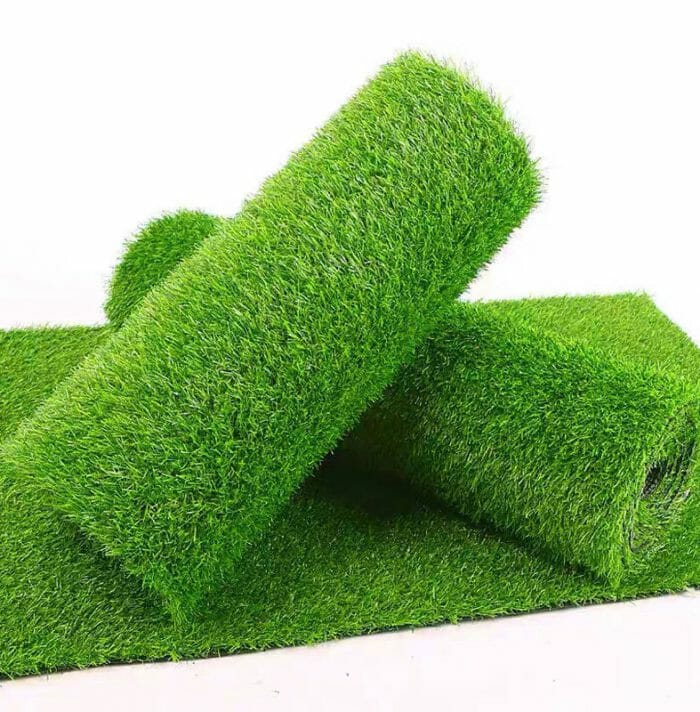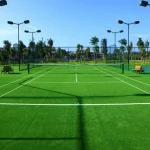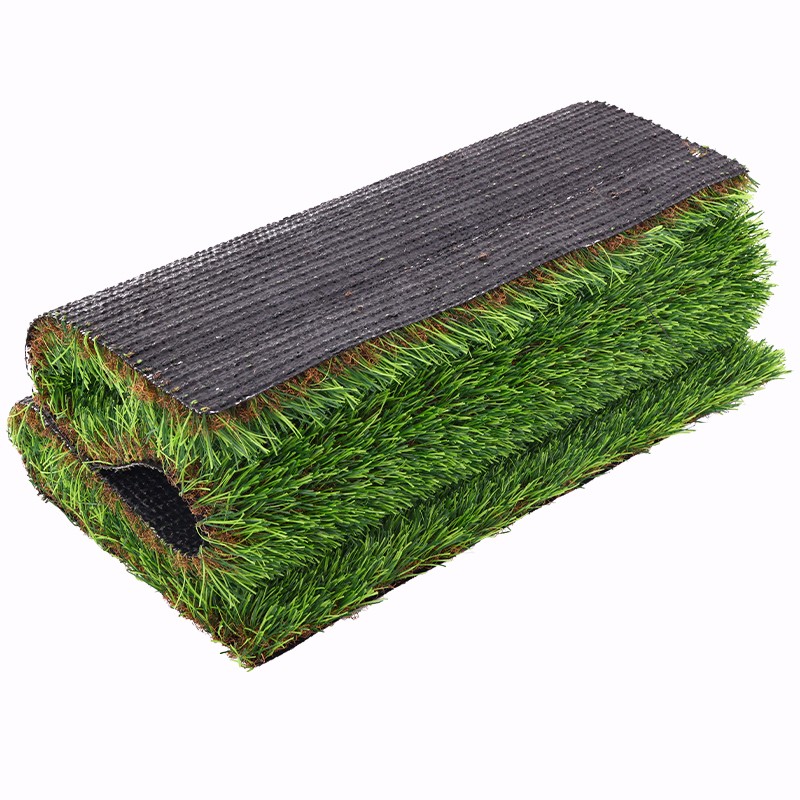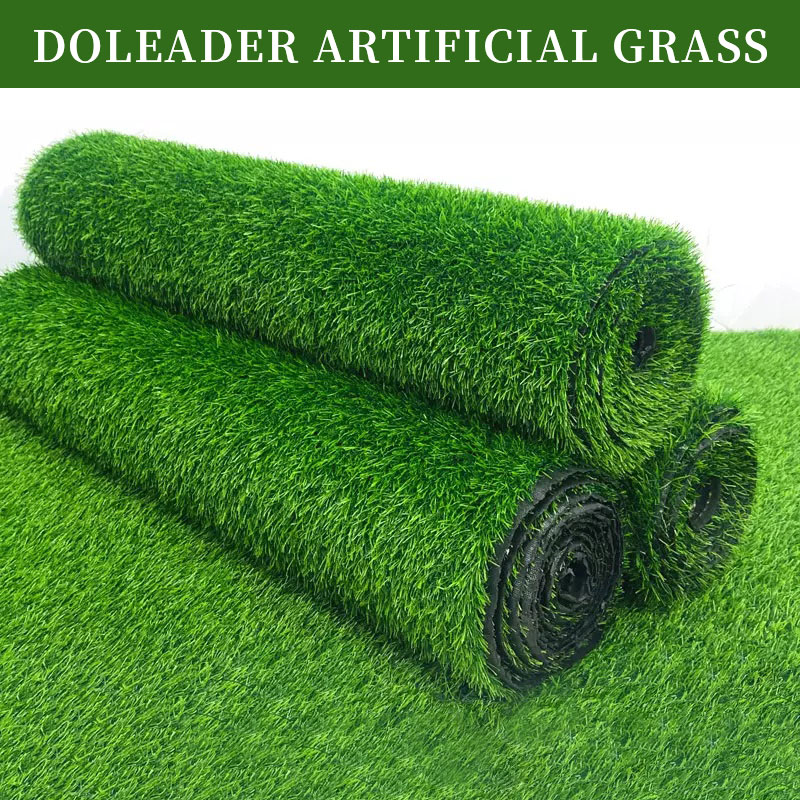Artificial grass is a great alternative to natural grass for many reasons. It can save you time, money and water, while giving you a beautiful and low-maintenance lawn all year round. But not all artificial grass is the same. There are different types of artificial grass that vary in quality, appearance, durability and cost. In this article, we will explain the different types of artificial grass and how to choose the best one for your yard.
What is Artificial Grass?
Artificial grass, also known as artificial turf or synthetic grass, is a surface made of synthetic fibers that look like natural grass. It is usually used for sports fields, but it can also be installed in residential and commercial settings. Artificial grass has many advantages over natural grass, such as:
- It does not need watering, mowing, fertilizing or weeding.
- It does not get muddy, brown or patchy.
- It does not attract pests or allergens.
- It can withstand harsh weather conditions and heavy traffic.
- It can last for up to 20 years with proper care and maintenance.
Types of Artificial Grass by Material
Artificial grass is a popular choice for both residential and commercial applications. It is a low-maintenance alternative to natural grass that can be used in a variety of settings, including lawns, patios, playgrounds, and sports fields.
The main factor that determines the quality and performance of artificial grass is the material it is made of. There are three general types of artificial grass, each based on the type of yarn that goes into making them: nylon, polyethylene, or polypropylene.
Nylon
Nylon is the strongest and most durable type of artificial grass. It is made from long, twisted fibers that are heat-set into place. Nylon artificial grass is ideal for areas that receive a lot of sun exposure or foot traffic, such as playgrounds, putting greens, or rooftops.
Advantages of Nylon Artificial Grass:
- Strong and durable
- Resists high temperatures and heavy weights
- Suitable for high-traffic areas
Disadvantages of Nylon Artificial Grass:
- Most expensive type of artificial grass
- Stiff and least comfortable
- Absorbs water and may require drainage systems
Polyethylene
Polyethylene is the most popular and widely used type of artificial grass. It is made from short, chopped fibers that are heat-set into place. Polyethylene artificial grass is suitable for most applications, such as lawns, patios, pool areas, or pet areas.
Advantages of Polyethylene Artificial Grass:
- Affordable
- Soft and natural feel and appearance
- Non-porous and does not retain water or odors
- UV-resistant and fade-resistant
Disadvantages of Polyethylene Artificial Grass:
- Not as durable as nylon
- May be more difficult to install
Polypropylene
Polypropylene is the cheapest and least durable type of artificial grass. It is made from short, chopped fibers that are heat-set into place. Polypropylene artificial grass is not recommended for areas that receive a lot of sun exposure or foot traffic, such as driveways, walkways, or sports fields.
Advantages of Polypropylene Artificial Grass:
- Easiest to install and maintain
- Available in a variety of colors and styles
Conclusion
The type of artificial grass that is right for you will depend on your specific needs and budget. If you are looking for a durable and long-lasting option, nylon is a good choice. If you are looking for an affordable and versatile option, polyethylene is a good choice. And if you are looking for the easiest to install and maintain option, polypropylene is a good choice.
Additional Information
In addition to the three main types of artificial grass, there are also a number of other factors to consider when choosing artificial grass, such as:
- Fiber height: The height of the fibers will affect the appearance and feel of the artificial grass.
- Fiber density: The density of the fibers will affect the durability of the artificial grass.
- Infill: Infill is used to add weight and stability to artificial grass. There are a variety of infill materials available, each with its own advantages and disadvantages.
It is important to research the different types of artificial grass available before making a purchase. By comparing the various options, you can find the type of artificial grass that is right for your needs and budget.
Images and Videos
To improve the visual experience of the article, you can add images and videos of different types of artificial grass. This will help users better understand the characteristics of each type of artificial grass.
Word Choice and Tone
To make the article more professional and authoritative, you can use more technical terms and avoid using overly subjective or emotional language.
Examples
Here are some examples of how you can use these suggestions to improve your article:
- In the introduction, you can add a sentence or two about the history of artificial grass and its popularity.
- In the section on nylon artificial grass, you can add a table that summarizes the advantages and disadvantages of this type of grass.
- In the section on polyethylene artificial grass, you can add a link to a video that shows how this type of grass is installed.
- In the conclusion, you can add a call to action that encourages users to contact you for more information.
By following these suggestions, you can make your article more comprehensive, informative, and engaging. This will help you attract more users and improve your website’s ranking for related search terms.
How to Choose the Right Artificial Grass for Your Yard
When choosing the best type of artificial grass for your yard, you need to consider several factors, such as:
- The size and shape of your yard
- The amount and frequency of human use on your yard
- The climate and weather conditions in your area
- The budget and maintenance costs you are willing to spend
- The personal preference and style you want to achieve
Here are some general tips to help you choose the right artificial grass for your yard:
- If you have a large yard that gets a lot of sun exposure and foot traffic, you may want to opt for nylon artificial grass for its durability and resilience.
- If you have a small to medium-sized yard that gets moderate sun exposure and foot traffic, you may want to choose polyethylene artificial grass for its natural look and feel.
- If you have a decorative or aesthetic purpose for your yard that does not require much sun exposure or foot traffic, you may want to go for polypropylene artificial grass for its variety and affordability.
Where to Buy Artificial Grass
If you are ready to buy artificial grass for your yard, you need to find a reputable and reliable supplier that can offer you high-quality products at reasonable prices. You also need to make sure that the supplier can provide you with installation and maintenance services if needed. Here are some sources where you can buy artificial grass:
- Online retailers: You can find a wide range of artificial grass products online from different brands and manufacturers. You can compare prices, reviews and features easily and conveniently. However, you may not be able to see or touch the products before buying them, so you need to rely on the descriptions and images provided by the sellers. You also need to factor in the shipping costs and delivery time when ordering online.
- Local stores: You can visit local stores that sell artificial grass in your area and see the products in person. You can touch and feel the quality and texture of the artificial grass and ask questions to the staff. However, you may not have as many options or varieties as online retailers, and you may have to pay more for the products and services.
- Professional installers: You can hire professional installers who can provide you with artificial grass products and installation services. They can measure your yard, recommend the best type of artificial grass for your needs, and install it properly and safely. However, you may have to pay more for their expertise and labor, and you may have less control over the quality and style of the artificial grass.
Conclusion
Artificial grass is a smart and eco-friendly choice for your yard. It can save you time, money and water, while giving you a beautiful and low-maintenance lawn all year round. But not all artificial grass is the same. There are different types of artificial grass that vary in quality, appearance, durability and cost. You need to choose the best type of artificial grass for your yard based on your specific needs, preferences and budget. We hope this article has helped you understand the different types of artificial grass and how to choose the right one for your yard. If you have any questions or comments, please feel free to leave them below. Thank you for reading!










